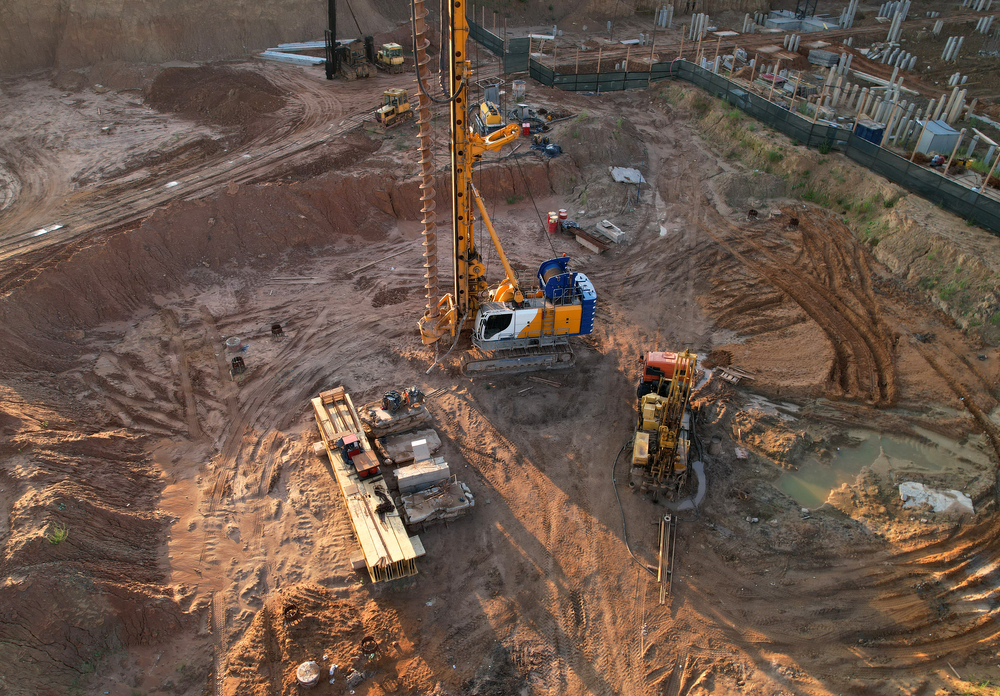The Single Strategy To Use For Geotheta
Some Known Details About Geotheta
Table of ContentsHow Geotheta can Save You Time, Stress, and Money.Some Of GeothetaThe 5-Second Trick For GeothetaSome Known Questions About Geotheta.Fascination About Geotheta

They carry out website investigations, accumulate examples, do laboratory examinations, and assess data to assess the suitability of the ground for building and construction tasks - Tailings Engineer. Based upon their findings, geotechnical engineers offer suggestions for foundation design, incline security, retaining frameworks, and mitigation of geotechnical dangers. They team up with other experts, such as designers, structural designers, and building teams, to guarantee that geotechnical considerations are integrated into the overall task style and execution
By analyzing the habits and homes of dirt and rock, they can determine potential geotechnical hazards such as landslides, dirt settlement, or incline instability. Their know-how assists prevent failures or crashes that could jeopardize lives and residential or commercial property. Here are some detailed responsibilities and duties of a geotechnical designer: Website Examination: Geotechnical designers conduct site examinations to collect data on subsurface conditions.
They translate the data to understand the homes and behavior of the dirt and rock, including their strength, permeability, compaction characteristics, and groundwater conditions. Geotechnical Evaluation and Layout: Geotechnical designers examine the information accumulated throughout site investigations to analyze the stability and viability of the website for building and construction tasks. They do geotechnical computations and modeling to examine aspects such as birthing capability, negotiation, incline stability, lateral earth stress, and groundwater circulation.
Geotheta Fundamentals Explained
Structure Style: Geotechnical designers play a critical function in creating foundations that can safely support the desired framework. They evaluate the soil problems and load demands to determine the proper structure type, such as superficial foundations (e.g., footings), deep structures (e.g (https://realistic-swam-lvtf1k.mystrikingly.com/blog/unlocking-the-secrets-of-geotechnical-engineers-the-geotheta-advantage)., heaps), or specialized strategies like dirt improvement. They consider elements such as negotiation limits, bearing ability, and soil-structure communication to create optimum foundation designs
They examine building and construction strategies, display site tasks, and conduct field examinations to validate that the layout recommendations are followed. If unpredicted geotechnical problems develop, they assess the scenario and supply referrals for removal or adjustments to the style. Threat Evaluation and Reduction: Geotechnical engineers assess geotechnical threats and risks connected with the job site, such as landslides, liquefaction, or soil disintegration.

Partnership and Communication: Geotechnical designers function closely with various other experts included in a task, such as architects, architectural engineers, and construction groups. Effective communication and partnership directory are vital to integrate geotechnical considerations into the overall task style and building and construction procedure. Geotechnical designers supply technological proficiency, response questions, and make sure that geotechnical requirements are fulfilled.
Some Ideas on Geotheta You Should Know
Right here are some kinds of geotechnical designers: Foundation Designer: Structure engineers specialize in making and evaluating foundations for structures. They examine the dirt problems, load requirements, and site attributes to determine one of the most appropriate foundation type and design, such as superficial structures, deep foundations, or specialized methods like pile structures.
They review the factors influencing incline stability, such as soil homes, groundwater conditions, and slope geometry, and establish techniques to protect against slope failings and minimize threats. Earthquake Designer: Earthquake engineers specialize in evaluating and developing frameworks to endure seismic pressures. They examine the seismic risk of a site, assess dirt liquefaction possibility, and create seismic style requirements to make sure the security and resilience of frameworks throughout earthquakes.
They carry out area screening, collect samples, and assess the accumulated data to define the dirt buildings, geologic formations, and groundwater problems at a website. Geotechnical Instrumentation Designer: Geotechnical instrumentation engineers concentrate on surveillance and gauging the actions of soil, rock, and structures. They install and maintain instrumentation systems that monitor elements such as soil negotiation, groundwater levels, slope activities, and architectural variations to evaluate efficiency and offer early cautions of potential concerns.
The 8-Minute Rule for Geotheta
They carry out tests such as triaxial examinations, combination examinations, straight shear tests, and leaks in the structure tests to gather data for geotechnical evaluation and design. Geosynthetics Engineer: Geosynthetics engineers focus on the style and application of geosynthetic materials, such as geotextiles, geogrids, and geomembranes. They utilize these materials to enhance soil security, enhance slopes, offer drainage solutions, and control disintegration.
They tend to be investigative individuals, which means they're intellectual, reflective, and investigative. They wonder, systematic, sensible, analytical, and logical. Some of them are additionally social, implying they're kind, charitable, cooperative, client, caring, useful, empathetic, skillful, and pleasant. Does this sound like you? Take our cost-free occupation examination to find out if geotechnical designer is among your top profession matches.
In the office setting, geotechnical engineers utilize specialized software program devices to execute computations, create designs, and evaluate information. They prepare reports, review job specs, interact with clients and team members, and coordinate project activities. The office setup gives a conducive atmosphere for research study, analysis, and partnership with other professionals associated with the project.
The Only Guide for Geotheta
They often go to project websites to perform website examinations, assess geotechnical conditions, and gather data for evaluation. These sees involve taking a trip to different areas, in some cases in remote or challenging surfaces. Geotechnical engineers might execute dirt tasting, conduct examinations, and monitor construction tasks to make sure that the geotechnical facets of the task are being applied correctly.
Geotechnical engineers likewise function in specialized geotechnical laboratories. Geotechnical lab designers function extensively in these settings, handling screening equipment, running tools, and recording data.